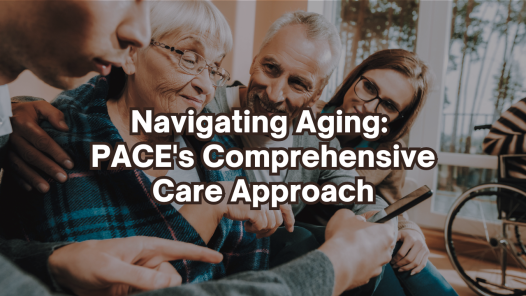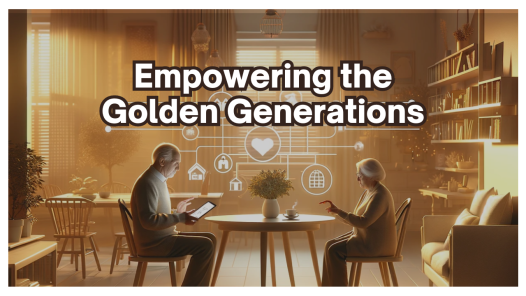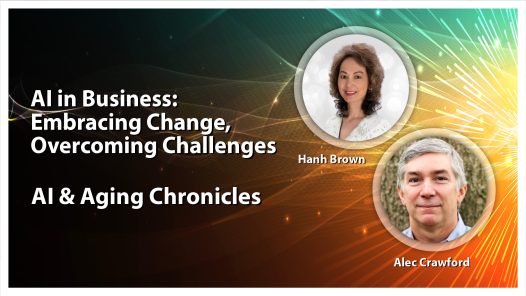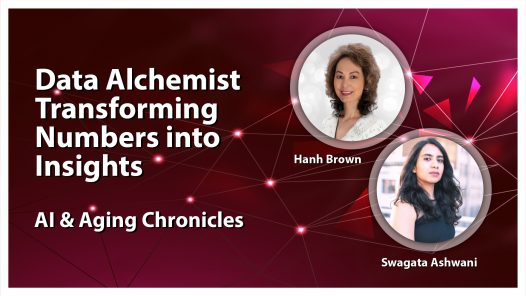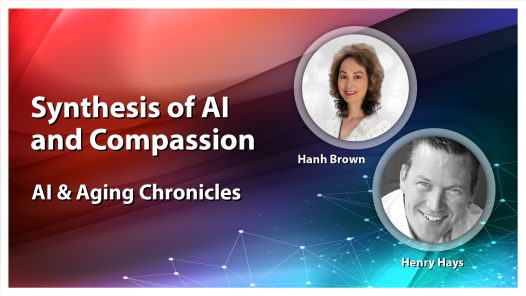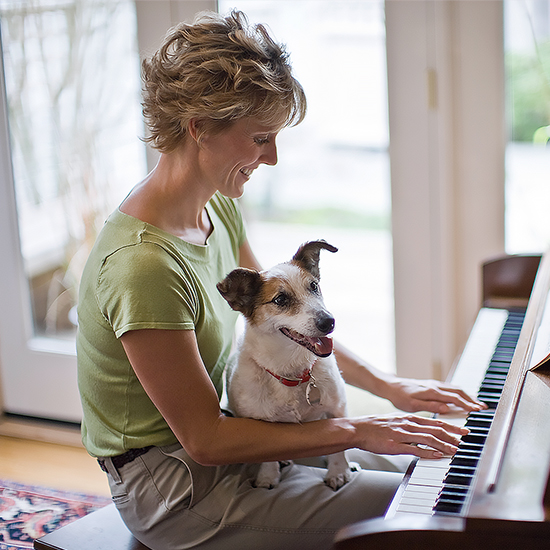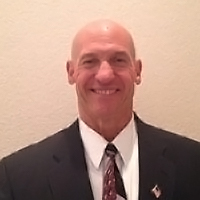
Today my guest is Ed Carmody. He is a Wellness Specialist helping people achieve good health. Global Internet Entrepreneur, RE, Philanthropist, and Field Engineer.
We talk about the purpose and function of the Telomere; “an essential part of human cells that affect how our cells age. Telomeres are the caps at the end of each strand of DNA that protect our chromosomes, like the plastic tips at the end of shoelaces. Without the coating, shoelaces become frayed until they can no longer do their job, just as without telomeres, DNA strands become damaged and our cells can’t do their job.” – Source: [Blackburn EH, Epel ES. Comment: Too toxic to ignore. Nature. 2012;490:169–171]
Ed Carmody’s Biography:
Ed, grew up in California and served 30 years in the US Air Force, retiring in 2010. During his time in the AF he worked as an Intermediate Avionics Technician on F-15s at Langley AFB, VA for about 6 years. He then taught technical training school at Lowry AFB, CO for 6 years and then served as an Air Force Recruiter, also in CO.
After recruiting he returned to the Avionics career field at Mountain Home AFB, ID until being mandated to retrain. With 17 years in service, he retrained to be Loadmaster on C-141s and C-17s at McChord AFB. Ed’s last assignment was at Travis AFB where he helped set up the newest C-17 squadron. Over the course of his AF career he was promoted to the highest enlisted rank – Chief Master Sergeant, a rank only 1% of the AF achieves.
After retiring from the USAF, Ed was hired to work for a DoD contractor and moved to Las Vegas, NV where he has resided for the last 9 years.
Presently, Ed and his wife are building a Health and Wellness business which they were introduced to approximately 3 years ago.
The focus of their Health and Wellness business is focused on overall health. Ed and his wife help people using natural products to achieve better health through better nutrition, weight management, and blood sugar regulation.
Ed and his wife have 4 children; Daughter (36), Daughter (28), Son (26), and Daughter (21).
Education:
AAS – Aircraft Operations
AAS – Instructor of Applied Science
AAS – Avionics Systems Technology
BA – Organizational Leadership
MA – Organizational Leadership
Hanh Brown:[00:00:00] Today, my guest is Ed Carmody. Well, how are you today?
Ed Carmody: [00:01:15] I’m doing great. How are you?
Hanh Brown:[00:01:17] I’m doing good. Thank you for being here. Yeah. Just give us some insight how you came to senior living and on your mission to helping others living a healthy lifestyle.
Ed Carmody: [00:01:29] Well, it’s really kind of interesting. I was in the service for 30 years. I did that and got out and started working for a DOD contractor.
[00:01:37] And I’ve always been somebody who worked out, tried to stay fairly healthy. And got introduced to some health and wellness opportunity and fell in love with it. And since that time I’ve been able to help a lot of different people. With weight issues overall, just general health, getting more fit, so on and so forth. [00:02:00] Then it’s been wonderful to see the change that people have made. And I have, my dad is 82. My mother-in-law’s in her ladies as well. She’s 80 and. Having been able to help them get healthier and see the changes that it’s made them giving them or energy able to get them off of some prescription medications, because they’ve gotten healthier, those kinds of things. [00:02:28] It’s been really very rewarding.Hanh Brown: [00:02:32] Absolutely. It’s really important as you know, folks that are eighties plus. To continue to keep their vibrancy and livelihood and keep them active and their minds engage. So if there is any type of process or encouragement in that whole realm, we all need to be doing that.
[00:02:54] So give me some insight, your take on what do you think of senior living and then the aging process. The media’s take on the aging process.Ed Carmody: [00:03:04] It’s really interesting. Well, senior living. For a lot of folks, unfortunately they allow their age to be a barrier to doing things. You may feel like, Oh, I’m too old to do this.
[00:03:15] Or I’m too old to do that because they aren’t doing, they tend to, I think, deteriorate faster. The folks that I’ve seen that. For example, my wife’s grandfather, when he was 85, I would play golf with him and he would still beat me on the golf course because he didn’t allow his age to determine what he did. [00:03:37] He was somebody who stayed active and because of that, he stayed healthy all the way up until the day he passed away, he was active. And I think he had a much fuller life folks that tend to. They go, well, I’m older, so I’m not going to do this. So they sit around more, which just makes it harder on them because their health deteriorates faster because they lose that fitness.Hanh Brown: [00:03:59] Right. Right. So it’s really their attitude towards the number that they reach and whatever in their mindset that they’re stuck on, that they actually are the ones limiting themselves well in the world that we’re in right now. There’s so many opportunities to take on not necessarily expensive, but very productive ways to continue to thrive.
[00:04:26] so as far as nutrition and health, is it difficult in getting the right nutrition or do you think that it’s widely available? I mean, give me your take on that.Ed Carmody: [00:04:35] It is very difficult to get the right nutritional today. A big part of the reason is because of the way that we source our food. Today, once upon a time you go back many years, you were sourcing your food from the local farm and the food and everything was very fresh.
[00:04:51] You weren’t having to have stuff that was processed the way it is today. You know, fruits and vegetables are a great example of, we know we need these fruits and vegetables because they’re going to provide us all these great vitamins and nutrients that we need for our bodies. But the problem is that those fruits and vegetables don’t have the same nutritional content they once did, because most of them, for example, you buy some oranges and. [00:05:16] Where are they coming from? Well, if you look at them, a lot of them are coming from Mexico or they’re coming from way across the country. And so they can’t be picked. Right. And then delivered to you the next day. Instead they’re picked while they’re still not. Right. So the, all the nutrition that would have got into them through the root system that is, which puts the nutrients in there, aren’t getting there. [00:05:38] So they’re putting them in, not right. They ripened in a truck on their way. To the market. And so the nutritional content is not there, so we have to find other sources and that’s why so many people lean to multivitamins and those kinds of things. And those help, I won’t say that they don’t, but the problem is that they’re basically synthetic. [00:06:02] And our bodies understand food. They don’t understand that. So we need to find a better whole food source that can provide us nutrition. And there are some whole food sources out there. And I have one that I use. I can see drinks by silly green drink. Yeah, it looks ugly. We call it affectionately called swamp water, but it’s, it has great nutritional 92 verifiable vitamins and nutrients. [00:06:28] So that’s a whole food source, so my body knows how to use it. And so that’s the kinds of things I recommend to people. Obviously I recommend ours number one, but there are others out there that are good. Better we’ll provide some things, but that’s the way to get it is if you can get it from a whole food source, you’re actually going to get. [00:06:51] All the nutrition and one of the other issues with vitamins and we buy a lot of food. That’s fortified with different vitamins, and you would see, look on the side of our cereal box, four to five minutes, got all these different vitamins in there, vitamins that they put in there, the way they put them in. [00:07:07] There was again through synthetics. And I recently found out this is something that I never knew about. It was called Vida MERS, which is the building blocks of vitamins. So, for example, a B6 vitamin actually has six different molecules. To make up a B vitamins. But if you look on your packaging, it’ll say you got so much in B six while they, they normally, whatever of those molecules of the B6, that’s the easiest to produce is what they put in there. [00:07:38] So you’re getting B six, but you’re not getting old. It’s an interesting thing that scientists and nutritionists are starting to discover. They’ve known about it a little bit over the past, but they didn’t have a way of discovering how to put that whole thing in there without going through a whole foods. [00:07:56] So if you can get a whole food, you can get the whole vitamin as opposed to just one or two of the vitamins.Hanh Brown: [00:08:02] Okay. Yeah, I agree. I think when you can and where you can get them in, if it’s within your affordable means, I think it’s great. Now, as far as telomere health and aging, explain to us what that is.
[00:08:15] And then I guess, how does that affect aging and what can we do about it?Ed Carmody: [00:08:19] Yeah, telomeres. It does something that, again is something I’ve learned about recently. What’s a telomere, a telomere is basically on our chromosomes. We have two scans. They’re trying to light them out and they’re like protective caps on those and those telomeres.
[00:08:36] As we age tend to get shorter, which also means that we lose the pairs of chromosomes factor. It’s not the it’s. What is it? I wrote a couple of announced the newborns have 8,000 base pairs of chromosomes. Adults have only at 3000 and elderly individuals have only 1500. So that’s what’s happening is we’re our telomeres because they’re not being protected. [00:09:01] For shortening and eventually those cause ourselves to not reproduce, they go into what they call senescence, which means they’re not splitting off the way they’re supposed to, which is what is they’re linking that to actually the aging process, the studies are showing that this is linking us also to a lot of our health issues, cancer, diabetes, so on and so forth that if you have healthy telomeres, You are going to be less likely to come down with these different things. [00:09:30] And one of the things that helps with telomere length is actually exercise. It makes a huge difference. They looked at telomere length athletes and they found that their telomere length is even longer than the average individual because of the athletic performance, because of all the exercise that they’ve done, it’s actually helped them make their. [00:09:52] Telomeres longer. So that obviously means it will be longer before it gets to a point where it reaches senescence. And if you can keep exercising, the studies show that as you’re exercising, you help your telomere life stay longer. And there are some different nutrients that. Have been shown to help with telomere health as well. [00:10:15] And those are things that if you can get those into your system, that they tend to help retain your telomeres. And there’s a couple of different things. One of the things that’s interesting is oxidative stress and inflammation. I mentioned short you’re telling her length as well. Mm, so good sources of antioxidants, good sources of natural anti-inflammatories things that are natural to a food source.[00:10:44] Those are going to be things that will help your telomeres. Not shorten as quickly. And if we can reverse them, who knows, maybe we could live forever.
Hanh Brown: [00:10:55] So what I’m hearing is the telomeres. Obviously you want to protect them and keep them lengthy and vibrant as long as you can. But as part of the aging process, it will shorten and to protect them, you could live a healthy lifestyle, which includes exercising, reducing your stress.
[00:11:17] Get enough sleep.Ed Carmody: [00:11:19] Yeah, absolutely. Yes. Sleep is vitally important and it is really when our bodies restore themselves really does all the repair work when we’re sleeping is when our body does all the repair work. If you have really good nutrition in there. As your body’s doing the repair work, creating the new shells, so on and so forth, it has the nutrients, it needs to provide your body what it needs to repair things.
[00:11:46] It’s amazing. The number of people that I’ve seen that have an illness that they’re being told, can’t be fixed. Doctors have said, well, there’s nothing we could do. And you get them on a healthier nutrition set and they start bringing into this really good nutrition. What happens is you’ve watched people stave off these diseases that should have killed them because they’re suddenly their body has the weapons basically to fight with. [00:12:18] And they’re able to turn around and maybe not totally get rid of it, but lengthen their lives. And even more importantly, the quality of their life.Hanh Brown: [00:12:25] The components that you describe healthy living to lengthen your telomeres consisting of let’s say exercise, reducing your stress and getting adequate sleep.
[00:12:39] I mean, all of those key components, it’s good for the heart and it’s good for the brain. It’s good for life, period. Yeah. And I believe it comes with a lot of conviction commitment. To know that these are daily things that you do and live by and not a momentary diet that comes and go.Ed Carmody: [00:13:04] Absolutely like talking about the nutrition.
[00:13:08] I’ve been drinking this for over 500 days. Because I know the nutrition I’m getting. So that’s the thing that I tell people is make sure that you’re doing this on a daily basis. Don’t go, Oh, I can do it for a day here. And a day there, if you do it every single day, you make it part of your lifestyle, make it a habit. [00:13:26] And our bodies are made to fix themselves, repair themselves to be productive. And that’s the other part of it. When you’re talking about, we need to sleep. But that means we need to rest all day either. And if you’re not getting up and moving those muscles will atrophy makes it harder to move. I’ve had people that I’ve talked with, that they’re in this vicious cycle where they have pain, arthritic, pain, discomfort, those kinds of things. [00:13:57] Well, the best thing for that is movement. But it hurts to move during this cycle. There will lay, it hurts when I move. Yeah. But if you move, it’s going to make it.Hanh Brown: [00:14:05] right. Just make the small incremental movement until it hurts and then you stop. And then I think. One exercises. Let’s say it might be uncomfortable the first couple of times, when they say go 15 minute, then they build up to 20 minutes and so forth.
[00:14:23] Right. [00:14:24] Cause there’s a period of uncomfortableness and it hurts and so forth. So do what you can. For that moment and then KIPP increasing the capacity over time. But I think too often people speak as if they’re defeated. They don’t want to try again.Ed Carmody: [00:14:42] Part of it’s a mental state mental barrier. They have they go because they think, well, Exercise, they think of the gym and people lifting weights and doing all these things.
[00:14:54] And exercise can be as simple as taking a walk around the block. If you can even do that, it makes a difference in your health and slowly add to that.Hanh Brown: [00:15:05] I think it’s great. You know, during the past four to five months or so during the stay at home orders. Well, obviously Jim’s, I believe, at least around here, it’s still close.
[00:15:14] So the most inexpensive way, or actually tree it’s just taken, walks around your neighborhood at a park, wherever that might be. And you might start out with one or two rounds and you build your way up over a period of five months, maybe even five or six rounds. And I had to start out. Trying to get myself to enjoy that kind of walk because prior to COVID I worked out four times a week at a gym, and then suddenly I went through a pier. [00:15:41] I was like, Oh my gosh, it was affecting my brain. Cause it was getting kind of sluggish. I wasn’t thinking properly. And my mind was very sluggish. Again, I don’t enjoy walking. I prefer to workout. But the example that I’m using is just to show that. Without that physical activity, it had an effect on my brain and it was not good.Ed Carmody: [00:16:07] if I’m not getting my workout on a regular basis, I will get cranky because it provides so many things.
[00:16:15] Now I’m a big gym person. That’s my thing. As a gym as well. And yeah, gyms were shut down. Unlucky. Ours are back open again. They’ve been back open now for about a month. So I’ve been able to back in the gym, I was doing a little workouts at home and they, weren’t not the same. Right. Obviously I couldn’t get the same things out of it that I could, but I was doing something because it was like, I have to do something. [00:16:37] I also, unfortunately have a pool so I can jump in there and go swim. So I could at least do that, but I had to do something now I’ve got twin grandkids.Hanh Brown: [00:16:45] So Dell keep you busy.
Ed Carmody: [00:16:49] Yeah. So we’re watching the breakdown. So, yeah. But yeah, that’s something that also lifting them and playing with them and staying active with them and chasing them around.
Hanh Brown: [00:17:00] That’s very important. Okay. So let’s talk about mental wellness. What is your take on the frequency of mental illness and how can we help?
Ed Carmody: [00:17:08] Yeah, it’s crazy how many people are affected by mountain wellness in it. Some people it’s only effect almost everybody gets affected at some point or another, but it’s like over 18% of Americans today suffer from some sort of.
[00:17:25] Mental illness, most common being depression, but there’s a lot of others out there. And it’s really amazing to me that so many, I didn’t think it was that high, but it is. And the other issue is when you start talking about mental wellness, you talk about as we age a tendency to start also. Having some cognitive impairment at the same time, start losing little bits of memory here and there. [00:17:52] Or we have to struggle a little harder to remember something, you know, and of course that happens to us even when we’re young, right. We’d call my kids by the wrong. Thanks.[00:18:04] One out of every eight people, they suffer from decreased memory functions and in the workforce, that’s one of the biggest causes of poor workforce performance. Is basically mental fog being sluggish. And again, it comes down to the biggest things are sleep, exercise and nutrition. Those are really the biggest things. [00:18:27] When it comes to that, I actually took a couple of notes because there’s some things that are interesting. The big things are active lifestyle, diet sleep, and you can help that with some acute. Supplementation, some things that will help in different areas. There’s a bunch of studies at pub med to talk about the benefits of exercise on both physical and mental wellness. [00:18:49] One of these things about physical exercise for cognitive ability, there was a study where they did an MRI of an individual brain and the individual basically at rest, you know, they’re getting ready to do some studying and you see the. Area their brains that’s being activated. And then they had the same person went and did a 20 minute long, and then they sat down to do the study and the amount of increase of their brain that was being activated at that time was amazing. [00:19:21] Three times as much as their brain was being activated because it taken the time to take a 20 minute walk. And so that part to me was just incredible. I knew it helped because it’s going to get your blood flowing and those kinds of things, right?
Hanh Brown: No blood flowing, absolutely. You know, to muscle emotions.
Ed Carmody: [00:19:39] So it was very, very interesting to me that they were able to show how much of a difference it made. It just was very unique to me that’s because one of the things that is, is that there’s an area of the brain, are these things called BNDF. A brain derived neurotropic factors, which rewires your memory circuits.
[00:19:59] And they found that exercise also. And this is new has been shown to actually help increase your brain cells. Number of brain cells, something that for many years, we thought that once you lost your brain cells, cause you drink too much and you lose brain cells. We thought that was gone forever. And they’ve shown that at least some studies have shown. [00:20:20] There’s still, obviously this is pretty new again, but they’ve shown it that the exercise looks like it does actually help your brain cells regenerate. You get more brain cells. So again, it’s kind of interesting that I keep coming back to exercise because it is such a big. He and the reason that so many people today are not getting the same knowledge exercises because the type of jobs we do today compared to many years ago, and most of us sit behind a desk. [00:20:49] Now we’re on the phone. We’re not physically doing our job. Construction workers. They’re physical farmers, physical. I mean, back in the day, almost all of us did some farming and those kinds of things. We did more physical manual labor and today, so much of our work, especially in the United States. Is behind a desk it’s not physically active. [00:21:13] And so it makes a huge difference.Hanh Brown: [00:21:15] And then adding to that right now, not all gyms are open yet and it extends the stay at home. I don’t know where the state you’re in, but like here it hasn’t been open and we’re going back to even more locked down.
Ed Carmody: [00:21:32] You’re in Michigan. Okay. Okay. Yeah. Yeah. Michigan has been very stringent on a lot of things. I’m in Nevada and we’ve been pretty closed down. Our governor was very connected with the West coast governors and they kind of followed their lead in a lot of areas. Luckily she opened up the gyms. About a month ago and he hasn’t locked him back down with some of those other States have gone back into heavier lockdowns, been fortunate, they’ve talked about it and that keep cringing every time he talks about it, because I don’t want that to happen, but yeah, it’s definitely been harder for people to get in there,
Hanh Brown: [00:22:08] get back into a new life, you know?
[00:22:12] So what other thoughts takeaway you would like to share with the listeners?Ed Carmody: [00:22:17] Well, basically. My goal is to try and help as many people be healthy as possible. And that’s really what I do. Um, you know, we do it as business, but we also do it because we want to see people do better, be healthier. And that’s what it is.
[00:22:34] My thing is if you don’t know how to get healthier, You don’t know where to start, find somebody that can help you.Hanh Brown: : [00:22:43] How can people find you?
Ed Carmody: [00:22:44] I’m on LinkedIn? I do have a website as well, but you see this thing that actually is to contact me directly. I can give you my website. Let’s get on to a whole bunch of products on it.
[00:22:53] We’ll guide you a little bit. I really want to make sure that what you get is what’s right for you. I hate to tell people, Hey, come buy a bunch of products. I don’t want you to do that. I want to know that we’re tailoring things towards what your goals are, what your needs are. So if you wanted to contact me on LinkedIn, you can contact me through my email, which is Carmody global. [00:23:19] At gmail.com, C a R R O D Y. global@gmail.com. Shoot me a message. That’s really the easiest thing. I don’t like people to just jump in and buy something. I don’t want to do that.Hanh Brown: Yeah. That you want to build a relationship and you want to make sure there is a plan that is good fit for them.
[00:23:38] That’s great.Ed Carmody:[00:23:38] I get too many people that they’ll throw something at you and you don’t even know.
[00:23:43] What I have going on. I know what you have going on and try to help you specifically.Hanh Brown: [00:23:49] Great, great. Well, thank you so much. I appreciate your time too. Thoughts and insight on telomere and living a healthy lifestyle. Thank you.
Ed Carmody: [00:24:00] Thank you. I appreciate it. You take care.
Hanh Brown: [00:24:05] Thank you so.
Ed’s links:
LinkedIn: https://www.linkedin.com/in/edrcarmody/
Company Website: https://www.carmodyglobal.isagenix.com/guide
Email: mailto:ecarmody26@gmail.com





